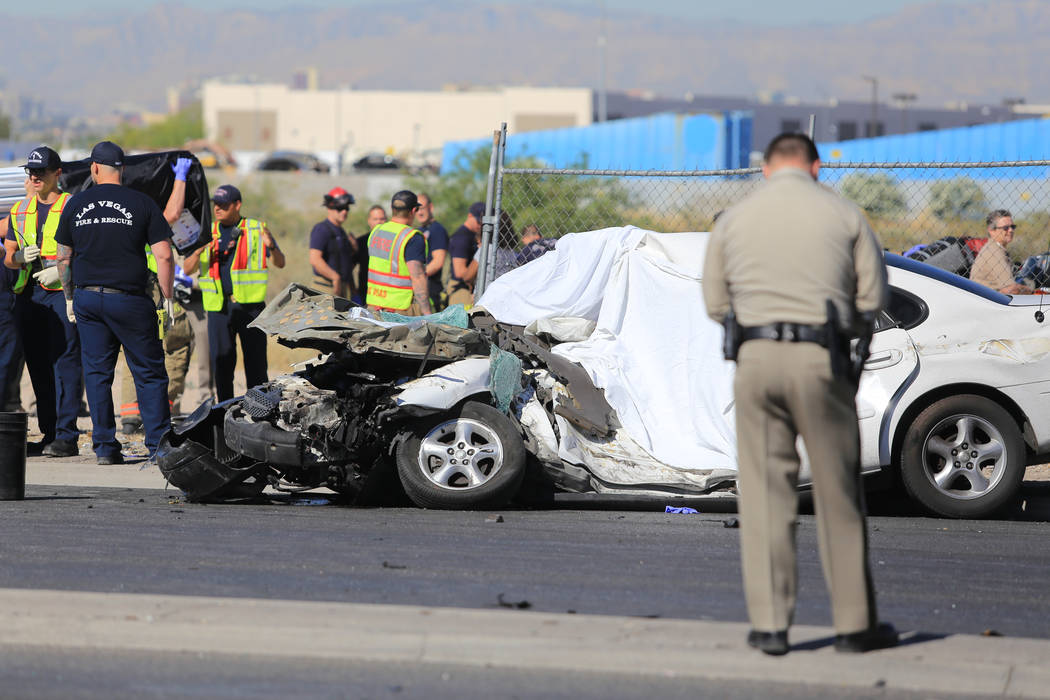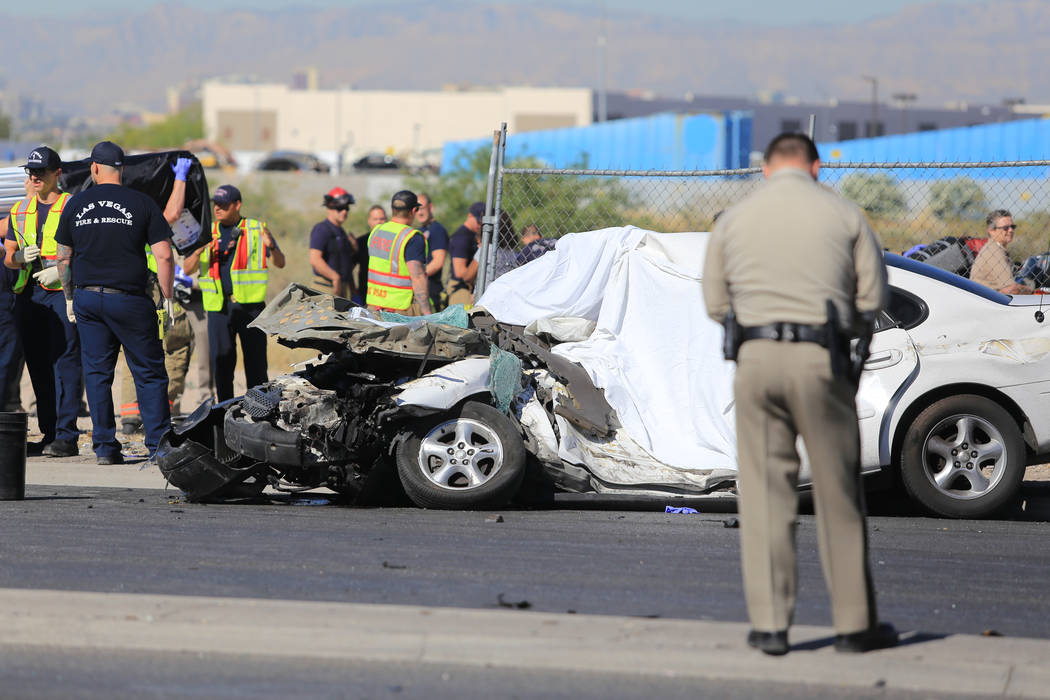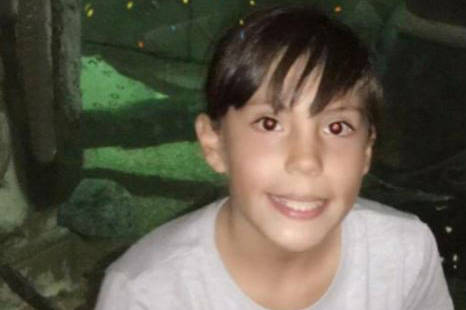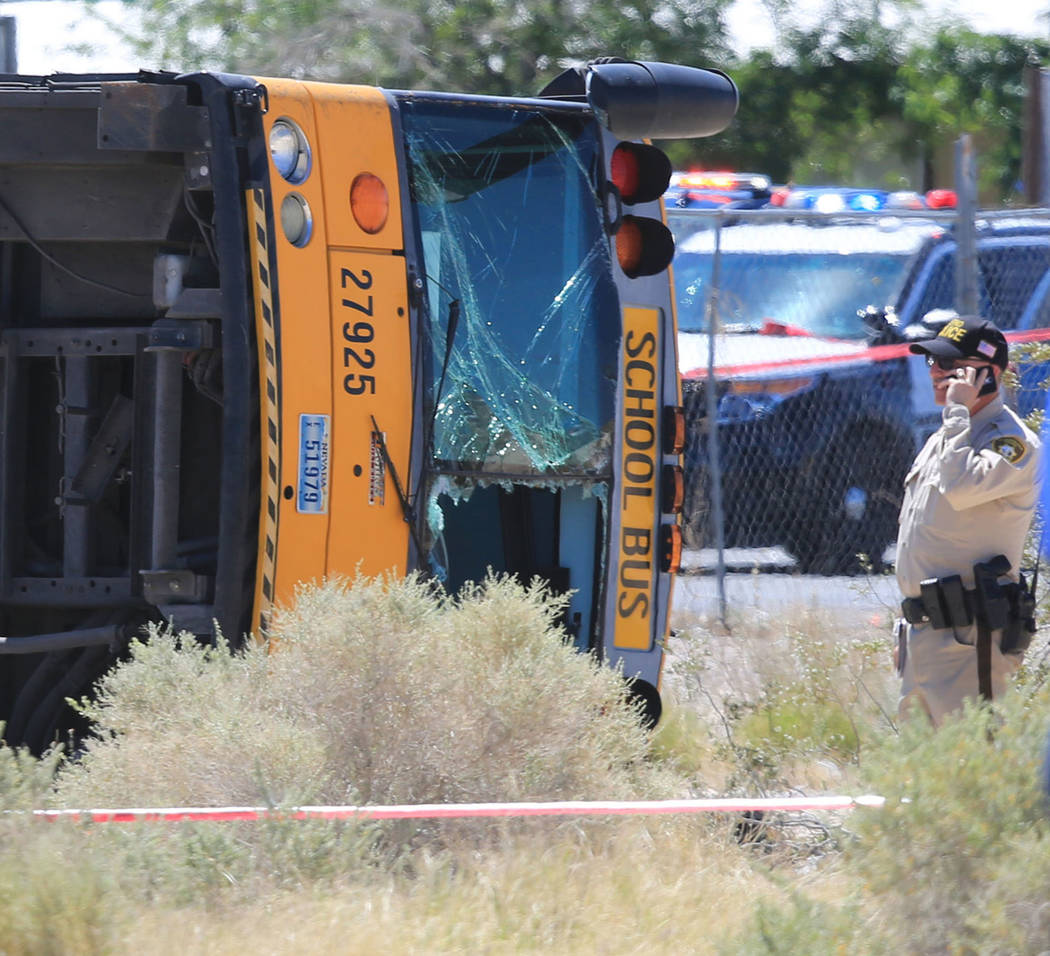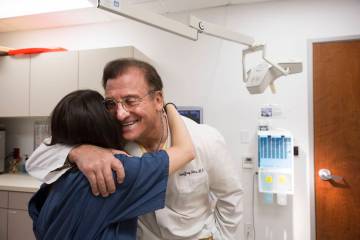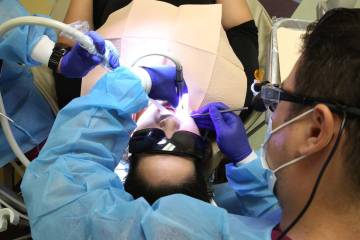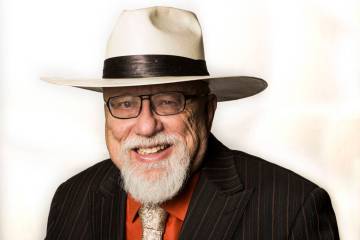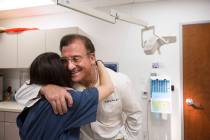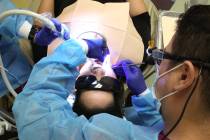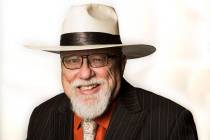Changing dangerous driving behavior isn’t easy
A 70-year-old grandmother driving her 10-year-old grandchild to school runs a red light and rams a school bus carrying 48 children. At least 15 children on the bus were taken to hospitals, the grandmother was killed and her granddaughter was critically injured.
Soon after that story broke Thursday, two words came to mind: distracted driving.
Because of Maria Castillo’s age, I didn’t immediately jump to the conclusion that she ran the red light Thursday morning at Carey Avenue and Nellis Boulevard because she was busy texting or talking on her cellphone. Older folks generally aren’t as wedded to their mobile phones as younger people.
It could have happened. Or she could have suffered a medical episode. She also could have just blown through the intersection. At this point, we don’t know what happened. But what I immediately saw in my mind’s eye was a loving grandmother paying too much attention to something her grandchild, Priscilla, either said or did.
I say that because I frequently did it with my own children. I learned my lesson after I nearly ran over a child in a school zone while glancing at homework my daughter showed me from her passenger seat. Had it happened, a beautiful child would have been killed, a family forever devastated and my life essentially over — conscience quite rightly cripples.
The more I think about distracted driving, the more I know we’ve all been guilty of it. We’ve fiddled with the radio or CD player, spilled a soft drink or coffee or hamburger in our laps, kissed a loved one, straightened a child’s car seat, read a map, took a call. How we’ve done it doesn’t really matter.
But its consequences are borne out by government statistics. Distracted driving kills nearly 3,500 people annually.
In a very real sense, I was scared straight. My eyes now remain on the road, hands on the wheel. Ditto, it seems, for Carissa Rey, a 33-year-old associate administrator at University Medical Center.
In her native Montana, she admits she had as many as a dozen accidents because she was putting on makeup, brushing crumbs off her clothes, talking on the phone, thinking about everything other than driving. Fortunately, she never hurt anyone. She even rear-ended a school bus. And totaled her car when she ran off the road.
“I paid my fines and that was it,” she said. “I saw myself as invincible, the way so many young people do.”
And then four years ago, she came to UMC. She saw families torn apart as they learned in the trauma center that their loved ones, often children, died in car wrecks. She thought about how she’d driven and how fortunate she and her potential victims had been.
When her own son was born 11 months ago, the dangers of distracted driving hit her even harder.
“I’ve changed the way I drive now completely,” she said.
Changing behavior is never easy. If it was, a scenario served up by the feds would end distracted driving: Take your eyes off the road at 55 mph for 4.6 seconds — the amount of time it takes to read or send a text — and you drive the equivalent of a football field blindfolded.
That information may be enough to make some people change their ways.
Given that many children could have died in Thursday’s accident, is it possible that just talking about why a 70-year-old woman ran a red light could cause more people to change their dangerous driving behavior?
Paul Harasim’s column runs Sunday and Tuesday in Nevada & The West and Monday in Health. Contact him at pharasim@reviewjournal.com or 702-387-5273. Follow @paulharasim on Twitter.



